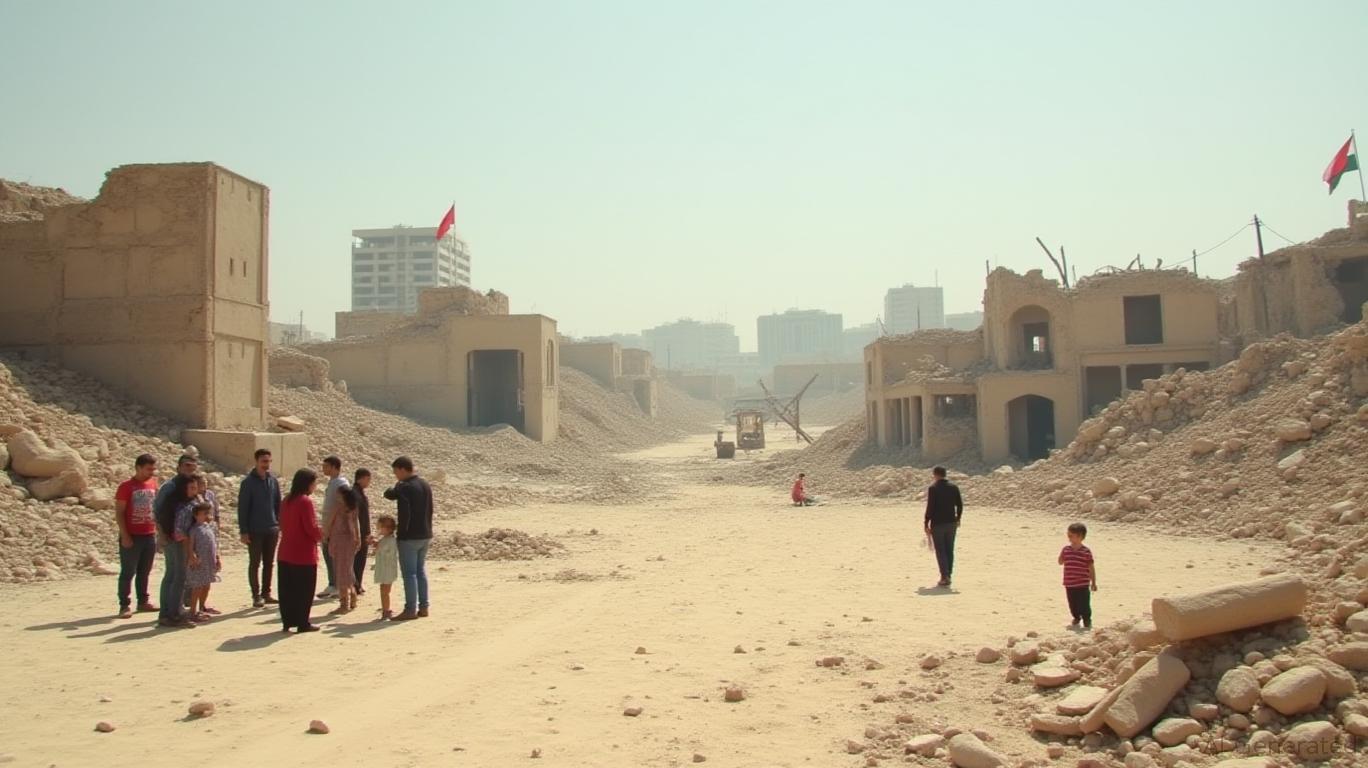Gaza Ceasefire Talks: A Fragile Truce with Major Market Risks
The latest round of Gaza ceasefire talks, mediated by the U.S., Egypt, and Qatar, has reignited hopes for an end to the conflict. Yet beneath the diplomatic rhetoric lies a complex web of geopolitical risks, humanitarian crises, and economic fragility that could destabilize markets if the truce collapses.

Geopolitical Risks: A Dance of Compromises
The U.S. has recalibrated its stance, dropping its long-held demand for Hamas’s disarmament as a precondition for a ceasefire. Instead, negotiators now prioritize immediate terms: the release of all 21 living Israeli captives and the return of bodies held by Hamas. This shift reflects growing U.S. skepticism about Israel’s military strategy, particularly after reports of three hostages killed during Israeli operations in March 2025.
However, disagreements over Gaza’s governance and aid distribution remain unresolved. The U.S.-backed Gaza Humanitarian Foundation (GHF), which seeks to bypass UN aid channels, has drawn sharp criticism. Humanitarian groups call it “aid-washing,” arguing it risks entrenching Israel’s blockade. Meanwhile, Hamas insists on phased disarmament and Palestinian self-determination—a demand Israel’s government refuses to accept.
Humanitarian Crisis: A Threat to Global Stability
The humanitarian toll is staggering. By May 2025, at least 57 Gazans, mostly children, had died from starvation, with food prices surging 1,400% since the ceasefire began. Over 2 million people—83% of Gaza’s population—remain displaced, while healthcare infrastructure has been reduced to rubble. The World Food Programme warns that without immediate aid, famine could spiral into a regional humanitarian catastrophe.
The economic consequences are equally dire. Gaza’s economy has contracted by 83%, contributing just 3% to the Palestinian economy despite housing 40% of its population. Rebuilding the estimated $53 billion in physical damages—including 41–47 million tons of rubble—requires political will and international coordination that remain elusive.
Market Impacts: Volatility Ahead
The ceasefire’s fragility poses significant risks to regional and global markets:
1. Energy Markets: Gaza’s proximity to key oil transit routes means renewed conflict could disrupt supplies. Brent crude prices (USO) historically spike during Middle East instability.
2. Geopolitical Tensions: U.S.-Israel relations are strained, with Gulf states demanding Palestinian statehood as a precondition for economic ties. This could delay multi-billion-dollar U.S.-Gulf investment deals in energy and tech.
3. Humanitarian Bonds: Investors in emerging markets may face reduced liquidity as aid budgets divert funds to Gaza.
Conclusion: A Truce Too Fragile to Trust
The Gaza ceasefire is a tactical pause, not a strategic solution. With Hamas and Israel entrenched in irreconcilable demands, the risk of renewed violence remains high. Investors should brace for volatility in regional equities and energy markets, while long-term recovery hinges on resolving systemic issues:
- Economic Costs: Gaza’s reconstruction requires $53 billion—a figure unattainable without lifting the blockade and securing global funding.
- Political Deadlocks: Israel’s refusal to accept Palestinian governance and Hamas’s insistence on self-determination leave no room for compromise.
- Humanitarian Time Bombs: Famine and disease threaten to destabilize the region, with 13,000 children already dead and malnutrition rates soaring.
In short, the Gaza ceasefire offers little more than temporary calm. For investors, the region remains a high-risk bet. Monitor geopolitical developments closely: a breakdown in talks could send shockwaves through markets, while a durable truce—a long shot—might unlock opportunities in reconstruction and regional trade. Until then, caution reigns.


_442a2dcc1749832873286.jpeg)
_e68fac6d1749831664430.jpeg)





